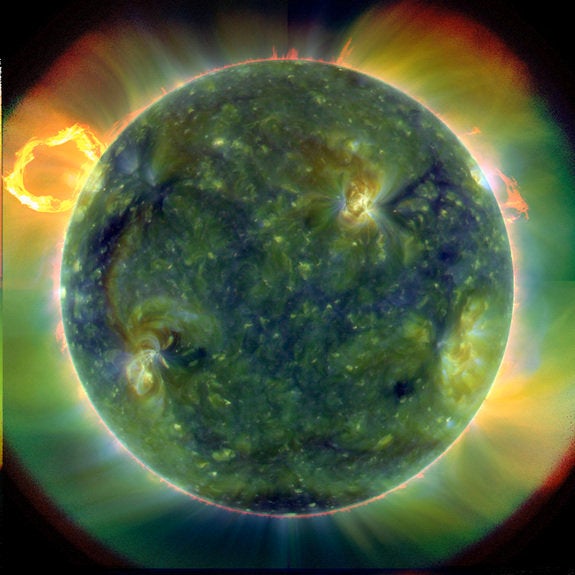To the naked eye, the Milky Way can seem little more than a whitish smudge stretching across the night sky -- at least if you're stargazing in the midst of a light-polluted city. But when observed by a powerful telescope positioned far out in space, our galactic home comes alive as a vast and very beautiful collection of glimmering celestial objects.
Just take a look at this eye-popping new Milky Way video from the European Space Agency. It shows innumerable stars and proto-stars (infant stars) along with gigantic glowing filaments and luminous clumps of gas and dust.
And it all seems to go on forever.
The video, released by the ESA last week, was created from observational data from the Herschel Space Observatory, a space telescope that was active from 2009 to 2013.
The ESA probe spent more than 900 hours observing the Milky Way's galactic plane in five different wavelengths of light, and then scientists spent two years processing the data to make the "maps" used to create the video.
The galactic plane is where most of the stars in our disk-shaped galaxy are concentrated.
In addition to awe-inspiring beauty, the imagery created by the Herschel Infrared Galactic Plane Survey (Hi-GAL) provides a treasure trove of new information about the Milky Way.
"These maps are not only stunning from an aesthetic point of view, but they represent a rich data set for astronomers to investigate the different phases of star formation in our galaxy," Dr. Sergio Molinari, principal investigator for the Hi-GAL project, said in a written statement.
An astronomer who wasn’t involved in the research emphasized one particular aspect of the Herschel survey.
"The unique aspect of imagery from the Herschel Space Observatory is the wavelength," Dr. Evan Kirby, an assistant professor of astronomy and astrophysics at CalTech, told The Huffington Post in an email on Tuesday.
The wavelengths Hubble can see are not observable from Earth because our atmosphere is opaque at those wavelengths, Kirby said, adding, "Thus Herschel is giving us a view of the Milky Way that is only possible through its position in orbit."
Far out!
